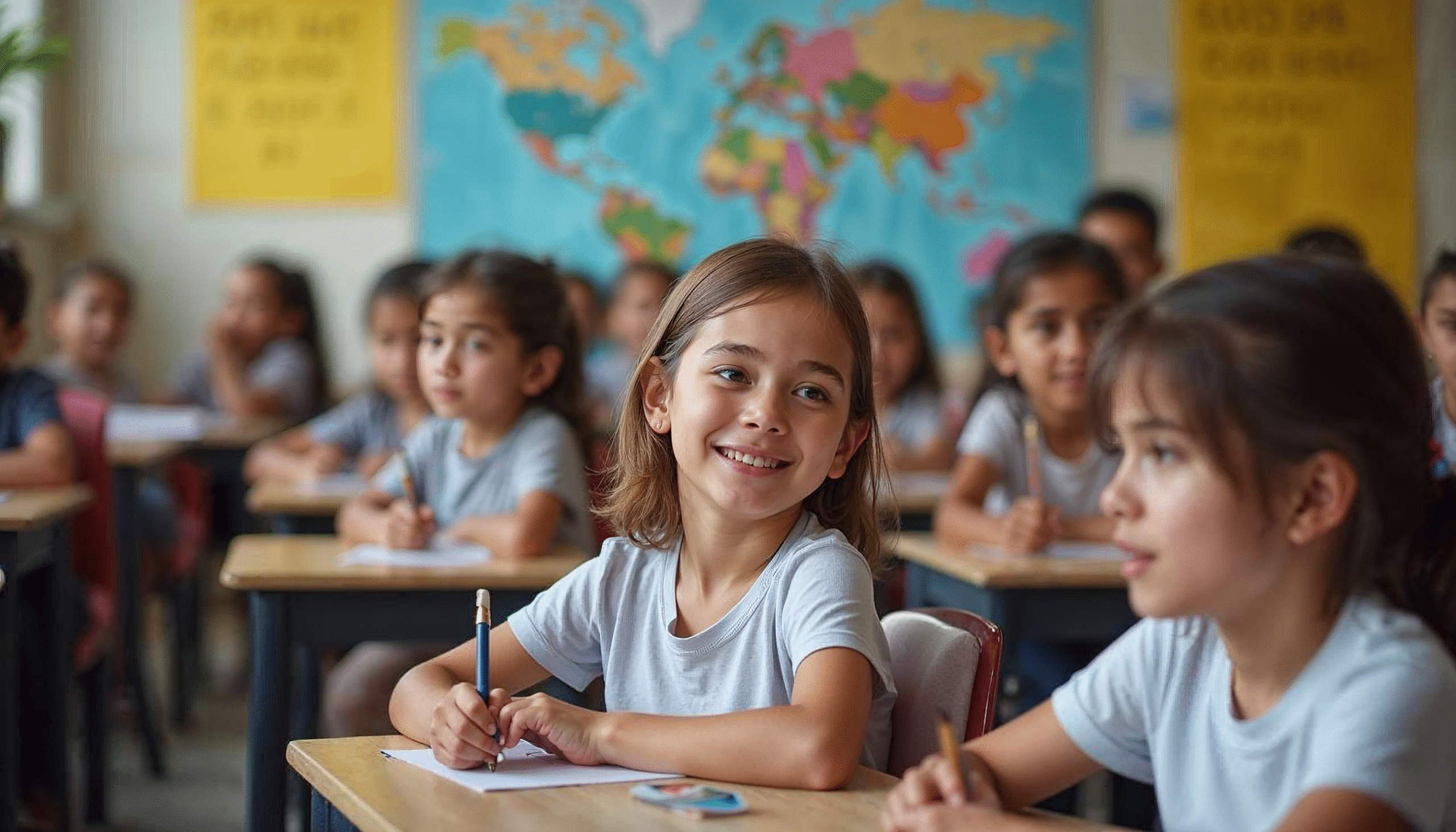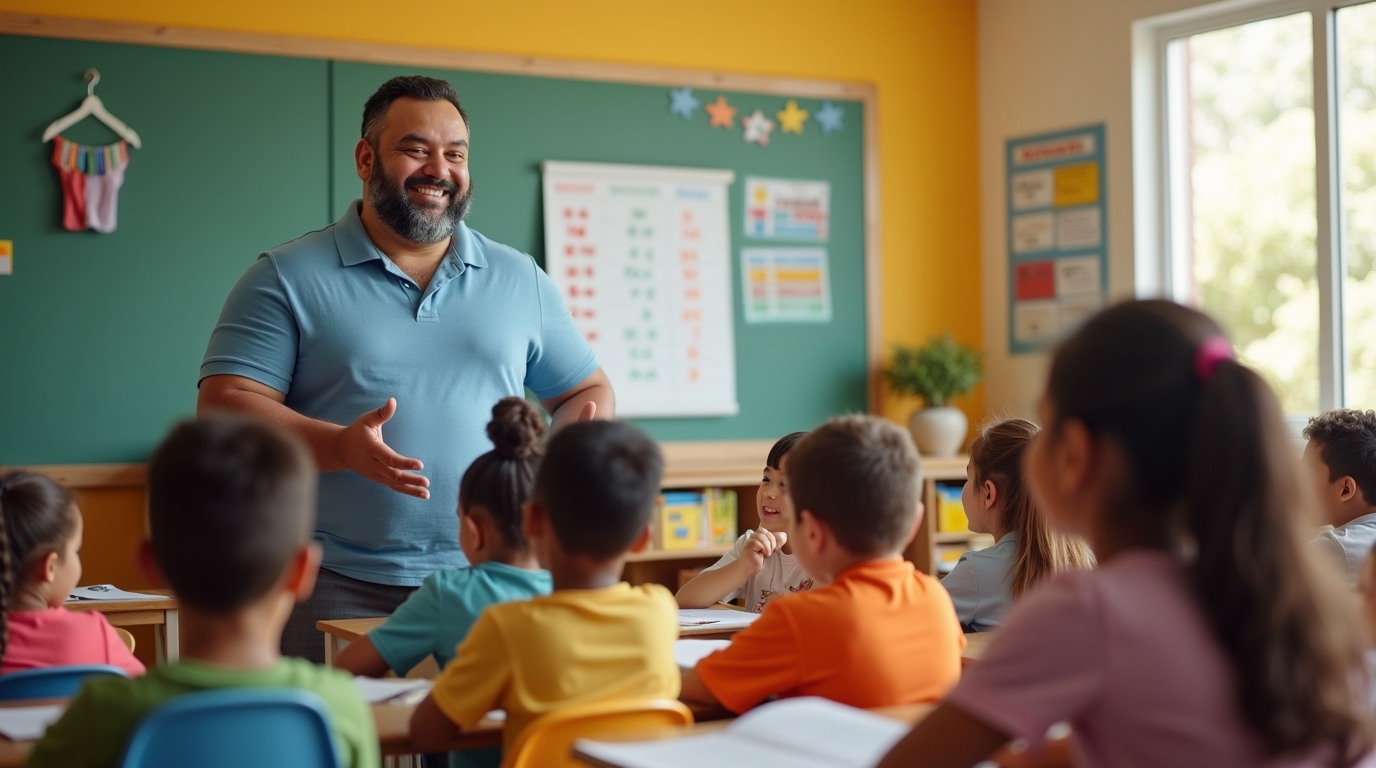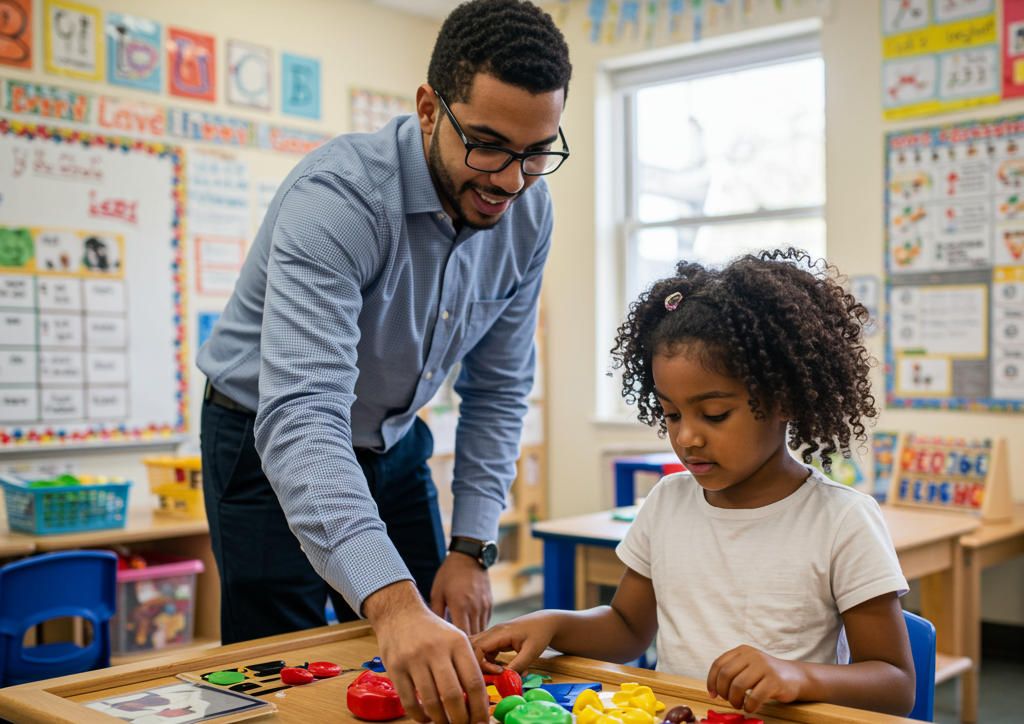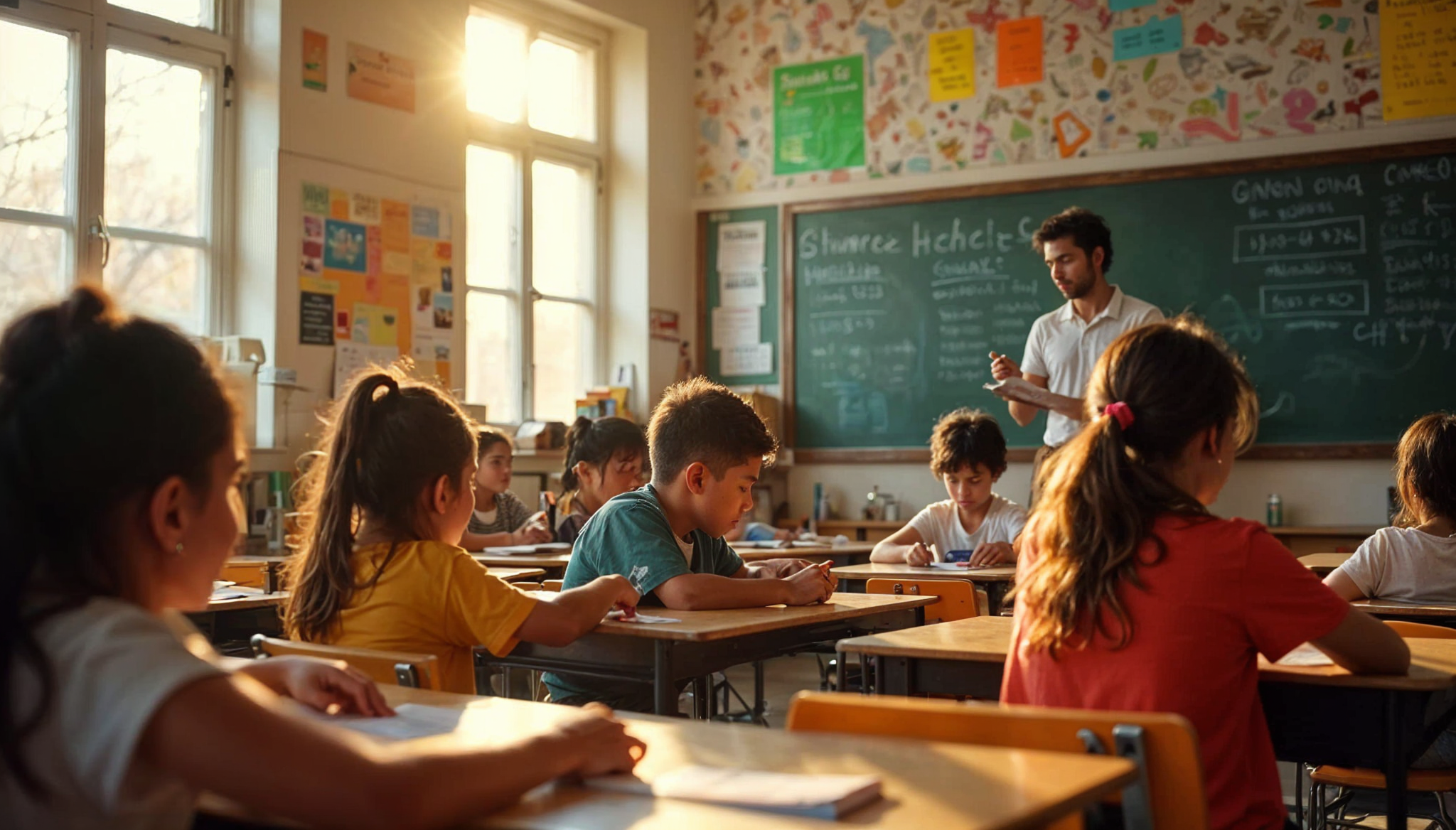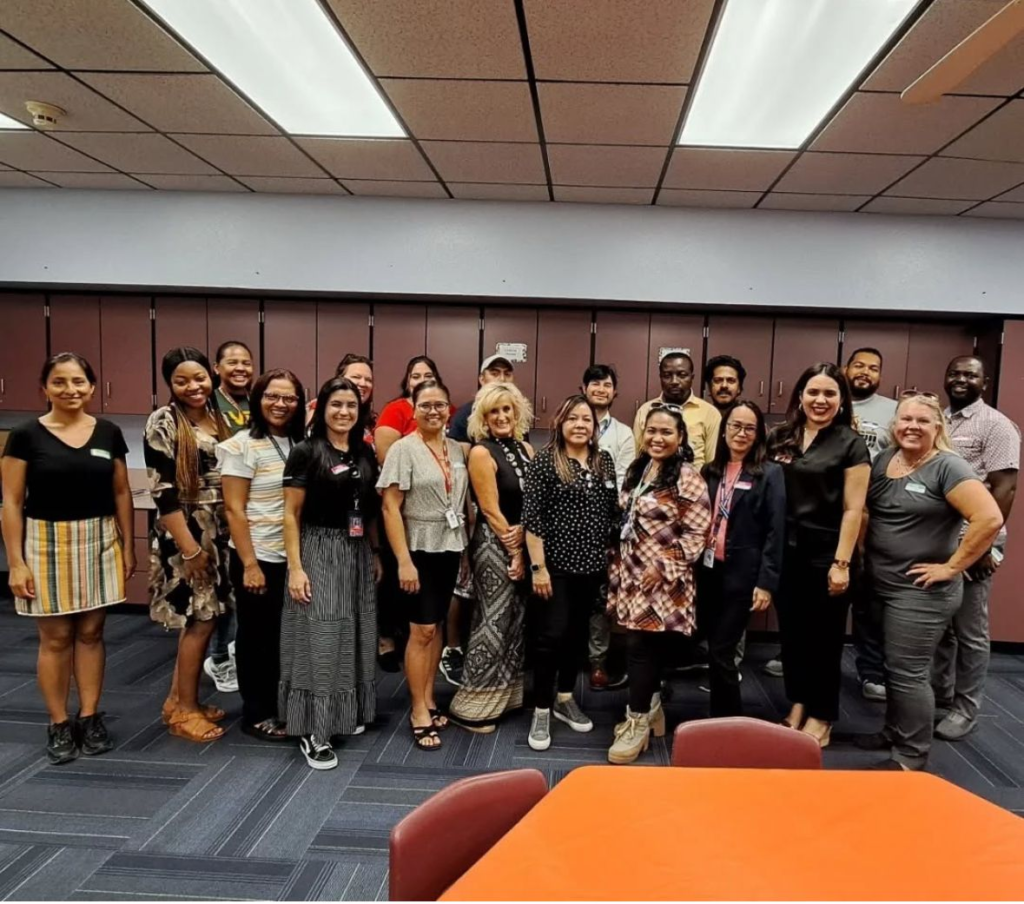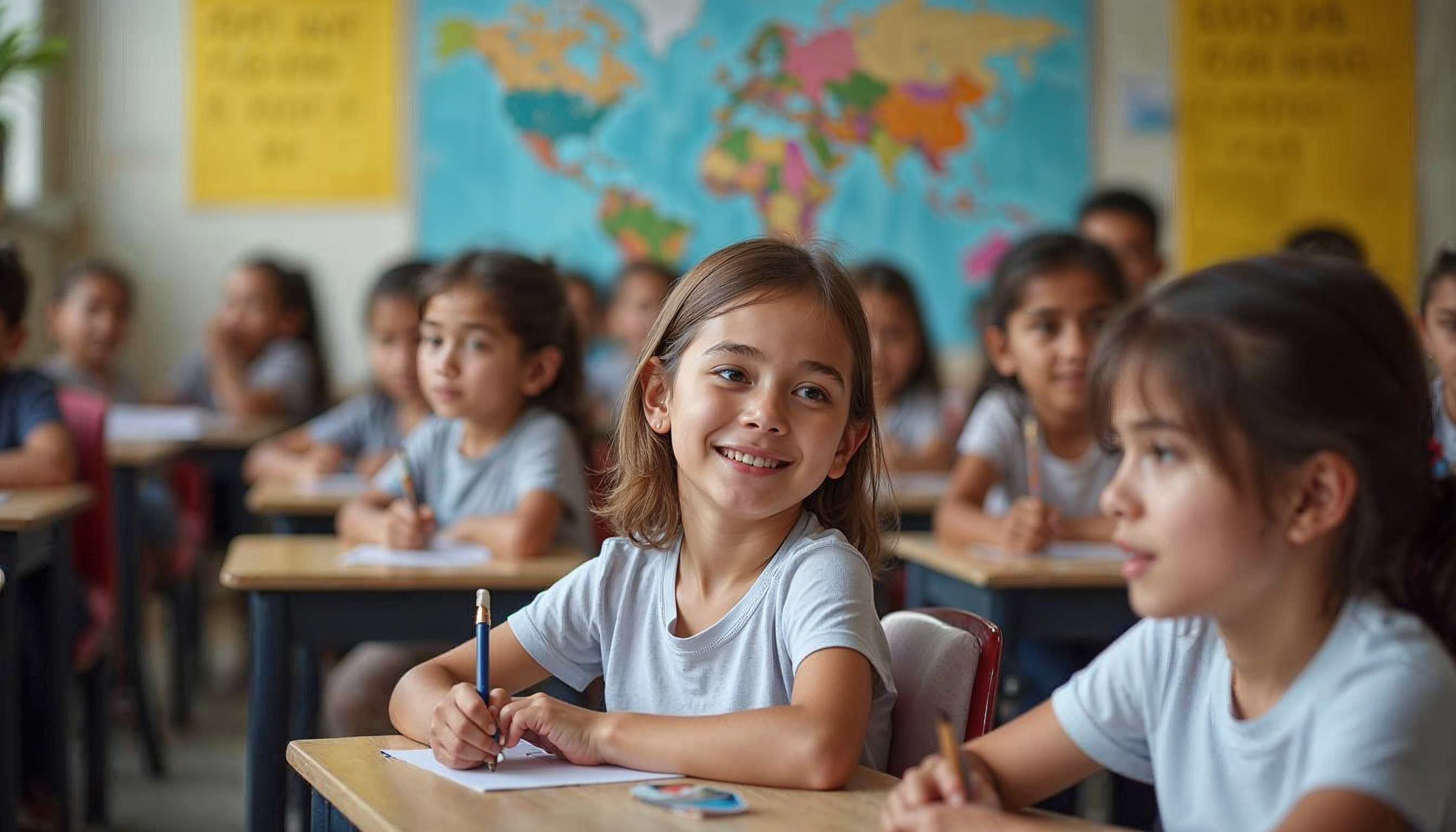In today’s increasingly interconnected world, the presence of diverse languages and cultures in our communities and schools is a powerful asset. As US schools welcome international teachers, they also often embrace a richer linguistic environment. Beyond simply gaining a new language for communication, learning in bilingual settings – whether as an English Language Learner (ELL), studying a foreign language, or simply being exposed to multiple languages in the classroom – offers profound benefits that actually reshape the brain and boost cognitive skills.
Let’s delve into the specific neurological and cognitive advantages of bilingualism and explore the unique role international teachers play in unlocking this potential for students in US schools.
The Cognitive Benefits of Bilingualism
Research consistently shows that the bilingual experience does much more than expand vocabulary. The constant mental juggling required to manage two or more language systems strengthens critical cognitive functions, often referred to as “executive functions.”
- Enhanced Executive Function: Bilingual individuals often demonstrate superior skills in:
- Attention and Focus: The brain learns to prioritize information in one language while suppressing the other, improving the ability to focus and ignore distractions. This is supported by studies showing that bilinguals exhibit better attentional control, as noted by Bialystok, Craik, and Luk (2012) [1] and Green and Abutalebi (2013) [2].
- Task Switching: Effortlessly moving between languages trains the brain to switch between tasks more efficiently (Prior & MacWhinney, 2010) [3].
- Problem-Solving: Managing two language systems requires flexible thinking, which translates into better problem-solving abilities across various domains
- Improved Metalinguistic Awareness: Bilinguals tend to have a deeper understanding of how language works – grammar, sentence structure, and word meanings – because they have multiple linguistic frameworks for comparison (Bialystok, 2001) [4].
- Boosted Creativity: Exposure to different linguistic structures and cultural perspectives can foster more divergent thinking and creativity (Leikin, 2011) [5].
- Delayed Cognitive Decline: Studies increasingly suggest that the consistent mental workout of navigating two languages can help delay the onset of age-related cognitive decline and conditions like dementia later in life. (Bialystok, Craik, & Freedman, 2007) [6]; (ScienceDaily, 2024, October 22) [7].
A Neurological Powerhouse
These cognitive advantages are rooted in tangible changes within the brain itself. Learning and using multiple languages can lead to:
- Increased Grey Matter Density: Areas of the brain associated with language processing and executive control show higher density in bilingual individuals (Mechelli et al., 2004) [8].
- Stronger Neural Connections: Recent research, demonstrated that bilingual individuals exhibit stronger whole-brain connectivity compared to monolinguals. This effect was particularly pronounced between the cerebellum and the left frontal cortex, and it was found to be stronger in those who learned a second language at a younger age. This suggests that early bilingualism promotes a more efficient brain organization in terms of functional connectivity. (Zeus Gracia Tabuenca and colleagues, 2024) [9]
- Greater Brain Plasticity: The continuous learning and adaptation inherent in bilingualism promote neuroplasticity, the brain’s ability to reorganize and form new connections (Bak & Alladi, 2015) [10].
Bilingual Learning with International Teachers
This is where international teachers become invaluable. They don’t just bring subject matter expertise; they bring a linguistic and cultural richness that can actively foster the bilingual brain advantage in their students.
International teachers often provide authentic exposure to another language (whether they are teaching it or it is their native language), offering students real-world pronunciation, intonation, and usage. This immersive experience is crucial for language acquisition and can be particularly beneficial for developing accurate linguistic representations (Gass & Selinker, 2008) [11].
By sharing their culture, perspectives, and experiences, international teachers make language learning and cultural diversity come alive, motivating students and broadening their worldview. This exposure is vital for developing global competence in students.
They can naturally integrate elements of their native language or culture, making bilingualism visible and valued, benefiting both students who share that language and those learning a new one. This creates an inclusive environment that validates students’ linguistic backgrounds. (García. O,2009) [12].
For students in US schools, learning in an environment influenced by international teachers can mean:
- Developing stronger cognitive skills beyond just language acquisition.
- Gaining a deeper appreciation for different cultures and global perspectives.
- Improving outcomes for English Language Learners by having empathetic and experienced educators.
- Being better prepared for a future where global communication and cognitive flexibility are increasingly important.
The “bilingual brain advantage” is a powerful testament to the brain’s incredible adaptability. By promoting cognitive flexibility, enhancing executive functions, and physically reshaping neural networks, bilingualism offers lifelong benefits. International teachers, with their unique linguistic backgrounds and cultural insights, play a vital role in cultivating this advantage in US classrooms, enriching the learning experience and equipping students with cognitive skills essential for success in our diverse and interconnected world.
This blog was written by Global Workforce Development, powered by IAG, an organization dedicated to creating international job opportunities for professionals.
References
[1] Bialystok, E., Craik, F. I. M., & Luk, G. (2012). Bilingualism: Consequences for mind and brain. Trends in Cognitive Sciences, 16(4), 236–242. https://doi.org/10.1016/j.tics.2012.03.001
[2] Green, D. W., & Abutalebi, J. (2013). Language control in bilinguals: The adaptive control hypothesis. Journal of Cognitive Psychology, 25(5), 560–571. https://pmc.ncbi.nlm.nih.gov/articles/PMC4095950/
[3] Prior, A., & MacWhinney, B. (2010). A computational model of bilingual lexical access. Bilingualism: Language and Cognition, 13(2), 173–193. https://www.cambridge.org/core/journals/bilingualism-language-and-cognition/article/abs/bilingual-advantage-in-task-switching/CC68F518019E8D5471D0B0381AC945E7
[4] Bialystok, E. (2001). Bilingualism in development: Language, literacy, and cognition. Cambridge University Press. https://psycnet.apa.org/record/2001-01047-000
[5] Leikin, M. (2011). The creative thinking of bilingual children. International Journal of Bilingual Education and Bilingualism, 14(1), 9–28. https://journals.sagepub.com/doi/abs/10.1177/1367006912438300
[6] Bialystok, E., Craik, F. I. M., & Freedman, M. (2007). Bilingualism as a protection against the onset of symptoms of dementia. Neuropsychologia, 45(2), 459–464. https://pubmed.ncbi.nlm.nih.gov/17125807/
[7] ScienceDaily. (2024, October 22). Bilingualism may maintain protection against Alzheimer’s. ScienceDaily. https://www.sciencedaily.com/releases/2024/10/241022154131.htm
[8] Mechelli, A., Crinion, J. T., Long, U., Friston, K. J., Ashburner, A., Price, C. J., & Green, D. W. (2004). Structural plasticity in the bilingual brain. Nature, 431(7006), 757.
[9] Gracia-Tabuenca, Z., Barbeau, E. B., Kousaie, S., Chen, J.-K., Chai, X., & Klein, D. (2024). Enhanced efficiency in the bilingual brain through the inter-hemispheric cortico-cerebellar pathway in early second language acquisition. Communications Biology, 7(1), 1269. https://www.nature.com/articles/s42003-024-06965-1
[10] Bak, T. H., & Alladi, S. (2015). Bilingualism and neuroplasticity. Current Opinion in Neurology, 28(6), 598–602.
[11] Gass, S. M., & Selinker, L. (2008). Second language acquisition: An introductory course (3rd ed.). Lawrence Erlbaum Associates. https://bpb-us-e2.wpmucdn.com/websites.umass.edu/dist/c/2494/files/2015/08/Gass.Second-Language-Acquisition.pdf
[12] García, O. (2009). Bilingual education in the 21st century: A global perspective. Wiley-Blackwell. https://www.wiley.com/en-us/Bilingual+Education+in+the+21st+Century%3A+A+Global+Perspective-p-9781444359787

